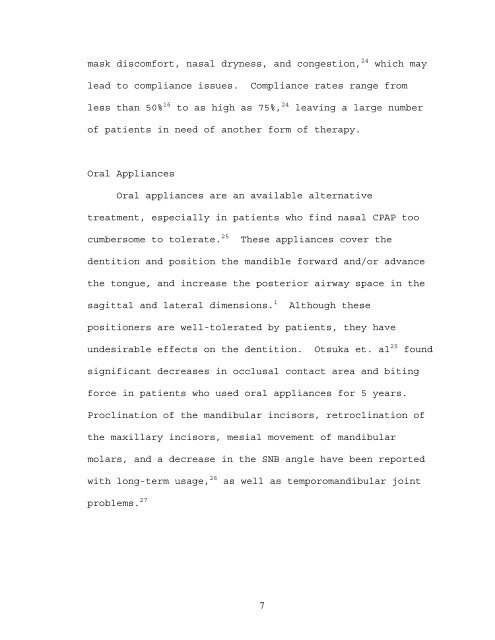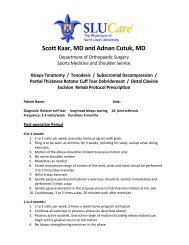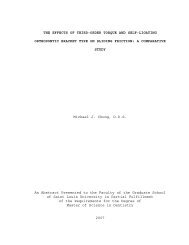PHARYNGEAL AIRWAY VOLUME FOLLOWING ...
PHARYNGEAL AIRWAY VOLUME FOLLOWING ...
PHARYNGEAL AIRWAY VOLUME FOLLOWING ...
Create successful ePaper yourself
Turn your PDF publications into a flip-book with our unique Google optimized e-Paper software.
mask discomfort, nasal dryness, and congestion, 24 which may<br />
lead to compliance issues. Compliance rates range from<br />
less than 50% 16 to as high as 75%, 24 leaving a large number<br />
of patients in need of another form of therapy.<br />
Oral Appliances<br />
Oral appliances are an available alternative<br />
treatment, especially in patients who find nasal CPAP too<br />
cumbersome to tolerate. 25 These appliances cover the<br />
dentition and position the mandible forward and/or advance<br />
the tongue, and increase the posterior airway space in the<br />
sagittal and lateral dimensions. 1 Although these<br />
positioners are well-tolerated by patients, they have<br />
undesirable effects on the dentition. Otsuka et. al 25 found<br />
significant decreases in occlusal contact area and biting<br />
force in patients who used oral appliances for 5 years.<br />
Proclination of the mandibular incisors, retroclination of<br />
the maxillary incisors, mesial movement of mandibular<br />
molars, and a decrease in the SNB angle have been reported<br />
with long-term usage, 26 as well as temporomandibular joint<br />
problems. 27<br />
7

















